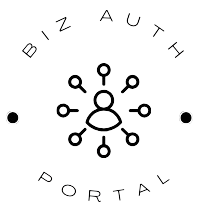5 Auth Portal Tips

Implementing an authentication portal is a critical step in securing user identities and ensuring that only authorized individuals have access to sensitive information and systems. A well-designed auth portal can significantly enhance security, improve user experience, and simplify identity management for organizations. Here are five key tips to consider when developing or selecting an authentication portal:
1. Multifactor Authentication (MFA) Should Be Mandatory
One of the most crucial features of an authentication portal is the support for multifactor authentication. MFA requires users to provide two or more verification factors to gain access to a resource, such as a password, a biometric scan (like a fingerprint or facial recognition), or a one-time password sent to their phone. This significantly increases the security of the authentication process, making it much harder for attackers to gain unauthorized access. When selecting or designing an auth portal, ensuring that it supports and mandates MFA for all users is essential.
2. User Experience Must Be Prioritized
While security is a top priority, the user experience should not be neglected. A cumbersome or overly complex authentication process can lead to user frustration, decreased productivity, and in some cases, may even encourage users to find ways to circumvent security measures. A good auth portal should offer a seamless and intuitive login experience, possibly including features like single sign-on (SSO) to reduce the number of times users need to authenticate, and adaptive authentication that adjusts the level of security required based on the user’s behavior and environment.
3. Implement Role-Based Access Control (RBAC)
Role-Based Access Control is a security approach that restricts system access to authorized users based on their roles within an organization. Implementing RBAC as part of the authentication portal ensures that users only have access to the resources, data, and systems that are necessary for their job functions. This not only enhances security by limiting potential attack surfaces but also helps in managing user privileges efficiently. The auth portal should be able to integrate with existing RBAC systems or have built-in capabilities to define and manage user roles.
4. Monitor and Analyze Authentication Attempts
To detect and respond to potential security threats effectively, it’s crucial to monitor and analyze all authentication attempts. The auth portal should have built-in analytics and logging capabilities that track all login attempts, including successful and failed logins, the devices and locations from which attempts are made, and any other relevant details. This information can help identify patterns of malicious activity, such as brute-force attacks or login attempts from suspicious locations, allowing for timely intervention.
5. Regularly Update and Patch the Auth Portal
Like any software system, an authentication portal can have vulnerabilities that hackers might exploit. Regular updates and patches are essential to fix known vulnerabilities, improve security, and add new features that can further enhance the security posture. It’s also important to conduct regular security audits and penetration testing to identify any weaknesses before they can be exploited. For organizations using third-party auth portals, ensuring that the provider has a strong track record of security and updates is crucial.
Conclusion
An authentication portal is a critical component of any organization’s security strategy, serving as the frontline defense against unauthorized access. By incorporating multifactor authentication, prioritizing user experience, implementing role-based access control, monitoring authentication attempts, and keeping the portal updated, organizations can significantly enhance their security posture and protect their digital assets. Each of these elements plays a vital role in ensuring that only authorized individuals can access sensitive resources, thereby safeguarding against a wide range of cyber threats.
What is the primary benefit of using multifactor authentication in an auth portal?
+The primary benefit of using multifactor authentication (MFA) is that it significantly increases the security of the authentication process. By requiring users to provide two or more verification factors, MFA makes it much harder for attackers to gain unauthorized access, thereby protecting user identities and sensitive information.
How does Role-Based Access Control (RBAC) enhance security in an auth portal?
+Role-Based Access Control (RBAC) enhances security by restricting system access to authorized users based on their roles within an organization. This approach limits potential attack surfaces by ensuring that users only have access to the resources, data, and systems necessary for their job functions, thereby reducing the risk of insider threats and lateral movement in case of a breach.
Why is monitoring and analyzing authentication attempts important for security?
+Monitoring and analyzing authentication attempts is crucial for detecting and responding to potential security threats. By tracking all login attempts, organizations can identify patterns of malicious activity, such as brute-force attacks or suspicious login locations, and take timely action to prevent or mitigate attacks.



